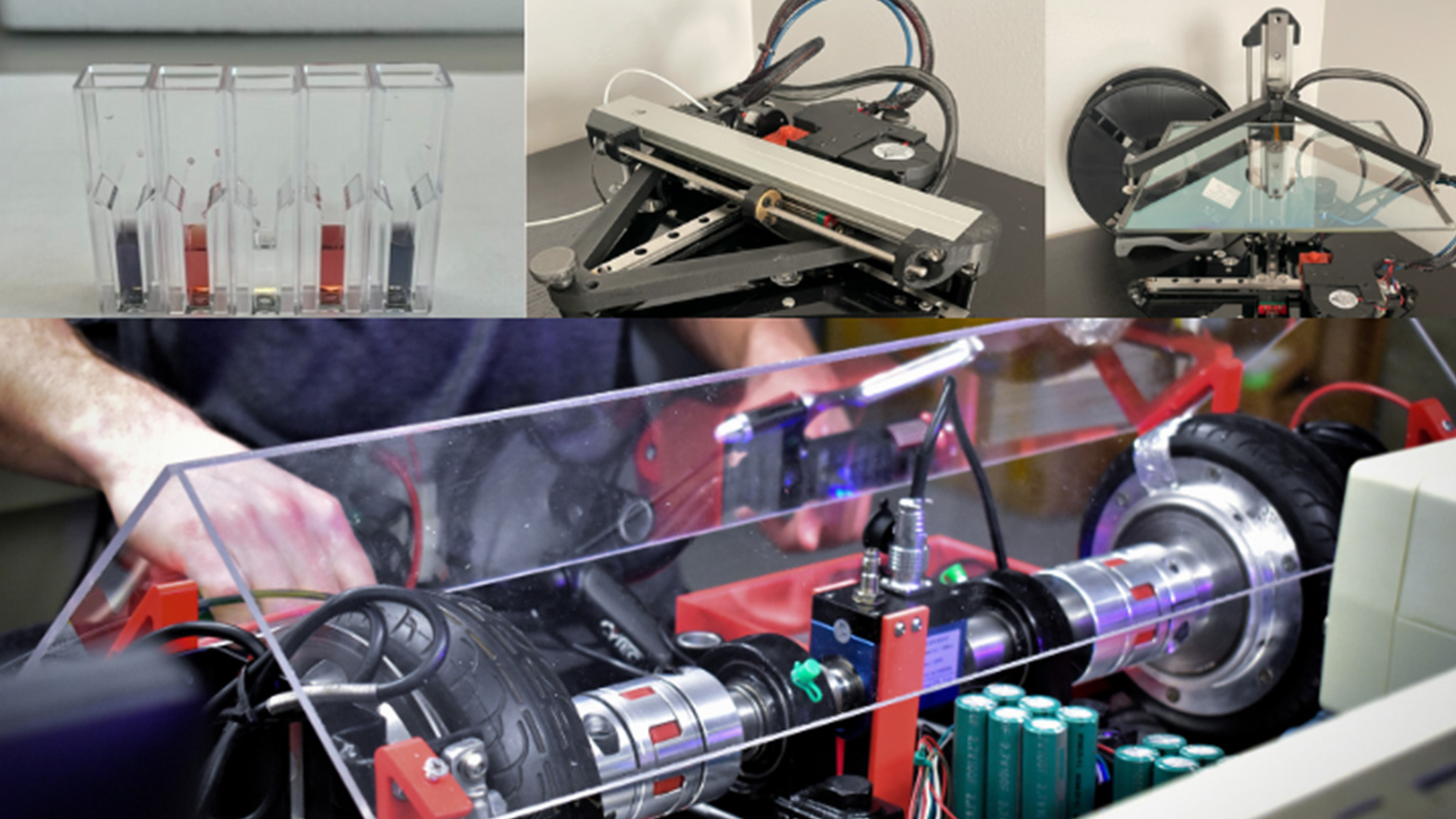
On Dec. 6, the Engineering Technology Building buzzed with activity as crowds gathered to experience the results of months of innovative work at the sixth annual Bachelor of Technology (BTech) Capstone Showcase.
For the past two semesters, BTech students have been diligently designing projects to meet community and industry needs.
From a non-invasive diagnosis tool for endometriosis to a visual recognition robot designed to eliminate weeds, students are tackling complex challenges, exploring visionary ideas and developing solutions that extend far beyond the classroom.
Three standout ideas from the showcase were named Capstone Design Award winners, which included a monetary prize.
“We selected projects that had a combination of a good proposal, a good idea and the potential to produce a great project,” says Professor Mike Justason, Program Chair, BTech, Civil Engineering Infrastructure Technology. “The award money was to help them achieve their vision and I think this was reflected in the quality of the final projects.”
Learn about the three winning capstone projects below.
Nanozyme-Based Colorimetric Biosensing of Uric Acid for Hyperuricemia
Team members: Suman Birdee, Lauren St Hilaire, Jacob Ascencio-Arriola, Osama Khan
BTech stream: Biotechnology
The team set out to create a biosensor that will be able to collect saliva from patients in order to determine whether or not they have a large concentration of the biomarker known as uric acid in their body. Too much uric acid is related to many serious issues such as gout, tumor lysis syndrome, cardiovascular disease, kidney disease and many other problems.
By being able to detect this problem with a rapid, inexpensive test the team hopes to develop this technology to detect these problems early on to improve the quality of life for those affected.
This biosensor works by combining saliva and gold nanoparticles with an enzyme, so that it will trigger a chemical reaction that generates a blue colour, indicating the presence of the biomarker. Having this knowledge can lead to additional diagnostics and preventative healthcare measures.
Torque Stand for Electric Motor Working in Power and Regenerative Mode
Team members: Jacob Musa, Kaylee Hachey, Nolan Kool
BTech stream: Automotive and Vehicle Engineering Technology
The team set out to create an affordable, adaptable and space-efficient Torque Stand for the future that would help students understand motor characteristics. The primary challenges of this project revolved around size, weight and budget constraints. However, they aimed to outperform the current stand in terms of being compact, versatile and user-friendly.
Having a stand that can precisely measure motor power or generator efficiency is valuable as electric motors are increasingly prevalent today. The team intends to use this as a foundation for further development, making it versatile and suitable for many motor testing applications.
Portable 3D Printer
Team members: Matteo Fazio and Samuel Lopez
BTech stream: Automotive and Vehicle Engineering Technology
The students’ Portable 3D Printer project seeks to address the issue of limited accessibility to 3D printing technology due to space constraints. By creating a compact and portable 3D printer, the project aims to make 3D printing more accessible and convenient for a broader range of users. The printer features a unique upside-down design with modular components and a folding z-axis, allowing it to fit within a standard-size filament box. This innovative approach ensures portability and maintains high print quality and performance.
The project’s primary outcome is the development of a portable 3D printer that has the potential to revolutionize the field of manufacturing and product design. This printer’s portability and ease of use make it suitable for professionals who travel frequently, educators aiming to integrate 3D printing into their teaching, hobbyists looking for versatile printing options, and individuals with limited space. Moreover, the project showcases the feasibility of pushing the boundaries of additive manufacturing technology, making it more accessible to a broader audience.
This project is based on an open-source community project. Through the capstone experience, the students completely redesigned and improved many aspects of the original project.
